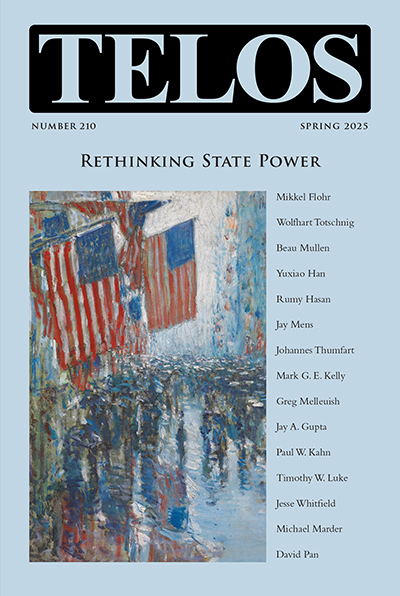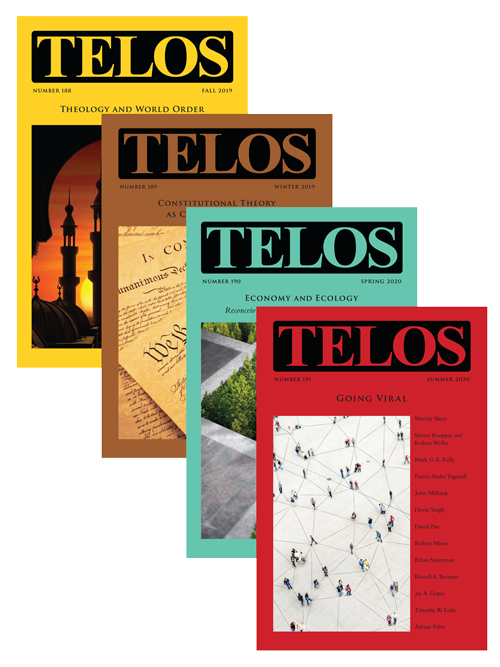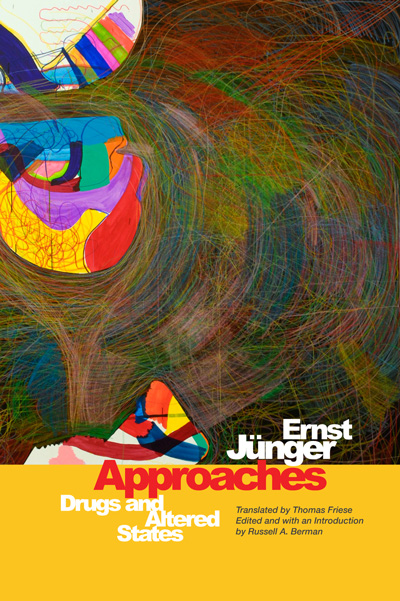By Russell A. Berman · Thursday, August 31, 2006 Ramin Jahanbegloo, a leading proponent of Iranian democratization, has just been released from several months of incarceration in Teheran. Active in building bridges to Western intellectuals (including dialogues with Isaiah Berlin and George Steiner), Jahanbegloo—also a Canadian citizen—was arrested in April of this year at the Teheran airport on his way to a conference in Europe. Accusations included spying and efforts to pursue a US-inspired “Velvet Revolution” in Iran. Other accounts suggest that an interview he gave with a Spanish newspaper, critical of Ahmadenijad’s Holocaust denial, led to his arrest.
The release may represent an effort to pursue a minor distraction from the crisis over Iran’s nuclear technology. There is certainly no indication of a larger thaw. There may be some more complex ideological and tactical connection, discussed below. This is however an important opportunity to pursue the connections between “theory,” which is clearly Jahanbegloo’s passion, and the urgent political questions of the moment.
In his essay “Iranian Intellectuals: from Revolution to Dissent,” Jahanbegloo distinguishes between reformist/revolutionary and conservative forces. Note the intellectual genealogy of the conservatives of the Mullahocracy.
“Unlike the reformist intellectuals, the neo- conservative intellectuals in Iran are in favor of the supremacy of the Leader and against concepts such as democracy, civil society and pluralism. This movement includes figures such as Reza Davari Ardakani, Javad Larijani and Mehdi Golshani. The famous personality among these is Reza Davari Ardakani, who as an anti- Western philosopher is very familiar with the works of Martin Heidegger. Davari, unlike Soroosh, takes some of the features of Heidegger’s thought, mainly the critic of modernity and puts it into an Islamic wording. He rejects the Western model of democracy, which is based on the separation of politics and religion.”
Heidegger in Teheran as an account of anti-modernism? But beyond the dialectic of left and right from the generation of the Iranian revolution, Jahanbegloo describes a younger generation which approaches modernity from what appears to be a post-modern perspective: not post-modern in the sense of giddy relativism or irresponsibility but with liberal openness and an interest in dialogue.
Continue reading →
By Russell A. Berman · Thursday, August 31, 2006 On Tuesday, August 29, a motorist from Fremont, California, Omeed Aziz Popal, identified in the press as an Afghan, struck and killed a pedestrian near his home, before driving to San Francisco where he went on rampage: targeting pedestrians both on sidewalks and in the streets, he wounded at least fourteen, leaving some in critical condition. However this carnage would simply be a sad story of local road rage, except for the distorted character of the reporting and the related discussion, which shed important light on the predispositions of the press and the official public sphere.
Initial references to Popal’s ethnicity and Muslim religion came from family members, who attributed his disturbed mental state to his recent arranged marriage. Yet this ethnic identification quickly disappeared; a press fearful of accusations of ethnic profiling is simply willing and anxious to avoid the topic. Yet because the press cannot discuss Popal’s ethnicity, it also cannot address another glaring fact: his path of terror culminated in a brutal ride on the sidewalk in front of the recently constructed Jewish Community Center. Why the Jewish Community Center? I have no privy information as to Popal’s intentions, but I can certainly see that the press and prominent politicians are avoiding the question, in order to suppress the possibility that a Muslim man set out on a bloody rampage with an intention to target the vicinity he might have reasonably identified as heavily Jewish.
Evidence: the San Francisco Chronicle begins its account by stating emphatically that “Twenty-nine-year-old Omeed Aziz Popal did not care about age, race or sex as he purposefully plowed down pedestrians in an unexplained hit-and-run rampage Tuesday, according to authorities.” Exactly how staff writer Adam Martin or the “authorities” know what Popal did or did not care about is not clear. The point of the article is presumably the diversity of the victims: Popal was an equal-opportunity killer, a poster child for non-discrimination. Mayor Gavin Newsome has also assured the public that the victims were randomly chosen—and they probably were, considered one by one. Popal targeted whomever he could find, taking aim at people in crosswalks, for example. The point however is the neighborhood in which he chose to carry out his attacks. The question which the press refuses to pose is why he chose to drive nearly forty miles from Fremont into San Francisco, and then drove directly to an area between a major synagogue and the prominent Jewish Community Center. His itinerary took him past many other urban areas—Hayward, Oakland or Berkeley, or he might have crossed the Bay to Palo Alto or Redwood City, all of which would have been much closer to Fremont with their own “target rich environments.” Instead he seems to have driven intentionally to San Francisco—but when he arrived there, he avoided the immediate targets, the downtown or Mission areas, where he might have found dense crowds, and curiously drove to a fairly out-of-the-way district, where he eventually started mowing down his victims.
Continue reading →
By Russell A. Berman · Wednesday, August 30, 2006 The celebrated Egyptian novelist and 1988 Nobel prize winner Naguib Mahfouz died on August 30 at the age of 94. Obituaries abound, and rightly so. Hosni Mubarak has praised Mahfouz as a “cultural light” whose work expressed the “values of enlightenment and tolerance.” George W. Bush called Mahfouz “an extraordinary artist who conveyed the richness of Egyptian history and society to the world.”
In this context of praise, it is crucial to remember how controversial Mahfouz in fact was (before he is recuperated and enshrined, like other great figures, revered and ignored). And the controversies around him encapsulate aspects of the contemporary cultural crisis, the vicissitudes of “enlightenment,” to use Mubarak’s term, and the resistance it faces.
For his outspoken support for Anwar Sadat and the Camp David Peace Accords of 1978, Mahfouz was vilified and his works were banned in many Arab countries. The bans were later lifted, opportunistically, after the Nobel Prize award. (So much for intellectual integrity.)
In 1981, Egyptian army members, who simultaneously belonged to the Egyptian Islamic Jihad Organization, assassinated Sadat. The attack was carried out on the basis of a fatwa that had been issued by Omar Abdel-Rahman, who was later convicted in the US for his role in the 1993 World Trade Center bombing.
Sadat’s assassination is pertinent here because Mahfouz too faced an assassination attempt by an Islamist extremist. His novel Children of Gebelawi (1959) attracted extensive criticism for blasphemy due to allegorical portrayals of the founders of the Abrahamic religions, including Mohammed. In 1989, after the Ayatollah Khomeini issued a fatwa ordering the death of Salman Rushdie for his Satanic Verses (1988), Abdul-Rahman reportedly said that if Mahfouz had been punished for Gebelawi, Rushdie would not have published Satanic Verses. Mahfouz at first criticized Khomeini for “intellectual terrorism,” but later in fact denounced Rushdie who “did not have the right to insult anything, especially a prophet or anything considered holy.” (At that critical moment to defend free speech and the freedom of imaginative literature, there were very few heroes.)
Continue reading →
By Russell A. Berman · Tuesday, August 29, 2006
Confronting Islamist Totalitarianism
From Middle East Quarterly, Summer 2006
On October 22, 2005, the France 2 television talk show Tout le Monde en Parle aired an interview with writer Salman Rushdie and French actor and Islamist Sami Nacéri. Left on the cutting room floor was an ugly incident during taping when Nacéri accused Rushdie of debasing Islam. If an imam asked him to kill Rushdie, Nacéri went on, he would himself shoot the bullet into Rushdie’s head. He then pantomimed firing a gun at Rushdie.
Philippe Val, editor of the French left-wing weekly Charlie Hebdo, described the omitted segment in the November 2 issue of the magazine. French reaction was minimal. While some journalists debated whether celebrities made appropriate commentators, there was little discussion of France 2’s decision to delete the offending segment.
On February 28, 2006, in response to Nacéri’s threat, France 2’s censorship, and the decision of several newspapers not to publish cartoons depicting the Prophet Muhammad, twelve prominent Muslim and non-Muslim intellectuals issued a manifesto first published on the French website Proche-Orient.info. The translation, replicated below, was later published in the Danish daily Jyllands-Posten. The willingness of prominent thinkers, both Muslim and non-Muslim, to stand together suggests that intellectuals recognize the totalitarian nature of Islamism and are determined not to cede terms of the societal debates to Islamists.
—The Editors
After having overcome fascism, Nazism, and Stalinism, the world now faces a new totalitarian global threat: Islamism.
We, writers, journalists, intellectuals, call for resistance to religious totalitarianism and for the promotion of freedom, equal opportunity, and secular values for all. . . .
Continue reading →
By Russell A. Berman · Tuesday, August 29, 2006 While Kofi Annan tours Beirut, interest may in fact be returning to Gaza where, despite the Israeli withdrawal, a situation of chaos resists efforts to establish something like a stable Palestinian regime. We can count on the usual suspects to blame Israel—despite the withdrawal—for all the ills in Gaza, but at least domestically other, more rational voices are being raised. In an article published in the Palestinian Authority Daily al-Ayyam, PA Spokesman Ghazi Hamad criticizes the habit of avoiding all self-criticism:
” . . . I want to make a reckoning and own up to our mistakes. We are always afraid to speak honestly about our mistakes, as we have become accustomed to placing the blame on other factors. The anarchy, chaos, pointless murders, the plundering of lands, family feuds . . . what do all of these have to do with the occupation? We have always been accustomed to pinning our failures on others, and conspiratorial thinking is still widespread among us. . . . ”
Today’s NYT reports on the article but quickly moves on to other topics. Yet Hamad’s account is an important document for the development of a theoretical account of what is going on in Gaza, which in turns is a distinctive piece of the larger discussion about Islamic extremism and the hypothesis of “Islamic fascism.” In Arendt’s account of totalitarianism, a core argument involves the constellation of three different social types: the masses, who make up the bulk of a displaced population cast into unemployment by the economic crises of the 1930s; the elite, the traditional ruling class which tries to safeguard its wealth while also indulging in a fascination with its own demise, a love affair with thugs; and the “mob,” made up of extremists, fanatics, and criminals—the recruiting ground for the leadership of the totalitarian parties. This is where the question of crime and illegality overlaps with the discussion of totalitarianism. Familiar in the imagery of “street fighting” in the Weimar Republic, illegality is, on the one hand part of the toolbox of practices of the radical political parties; on the other, it is chosen precisely in order to undermine the rule of law, which is the ultimate goal. And while the attack on legality is typically defended with ideological (or theological) arguments, there is at least the suggestion that those arguments are merely pretexts that enable the working of criminal psychologies: brutal thugs like to break the law and only need a modicum of intelligence to find some ideological justification. Why is Gaza in chaos?
Continue reading →
By Russell A. Berman · Tuesday, August 29, 2006 After Ahmadinejad’s letter to Bush, his epistle to Chancellor Merkl is now beginning to circulate. A comparison of the two texts might yield interesting results, but this second text, on its own, is disappointingly flat. Is he more gentle addressing a woman? (There is some intratextual evidence to support that hypothesis.) Or is he trying to appeal to the Germans and the Europeans whom he hopes to pry loose from America’s democracy agenda? Not unlikely. What can be gleaned from reading the letter to Merkl? A few symptomatic insights into Ahmadinejad’s mentality and an ideology that must circulate in at least some circles in Teheran. . . .
Continue reading →
|
|


